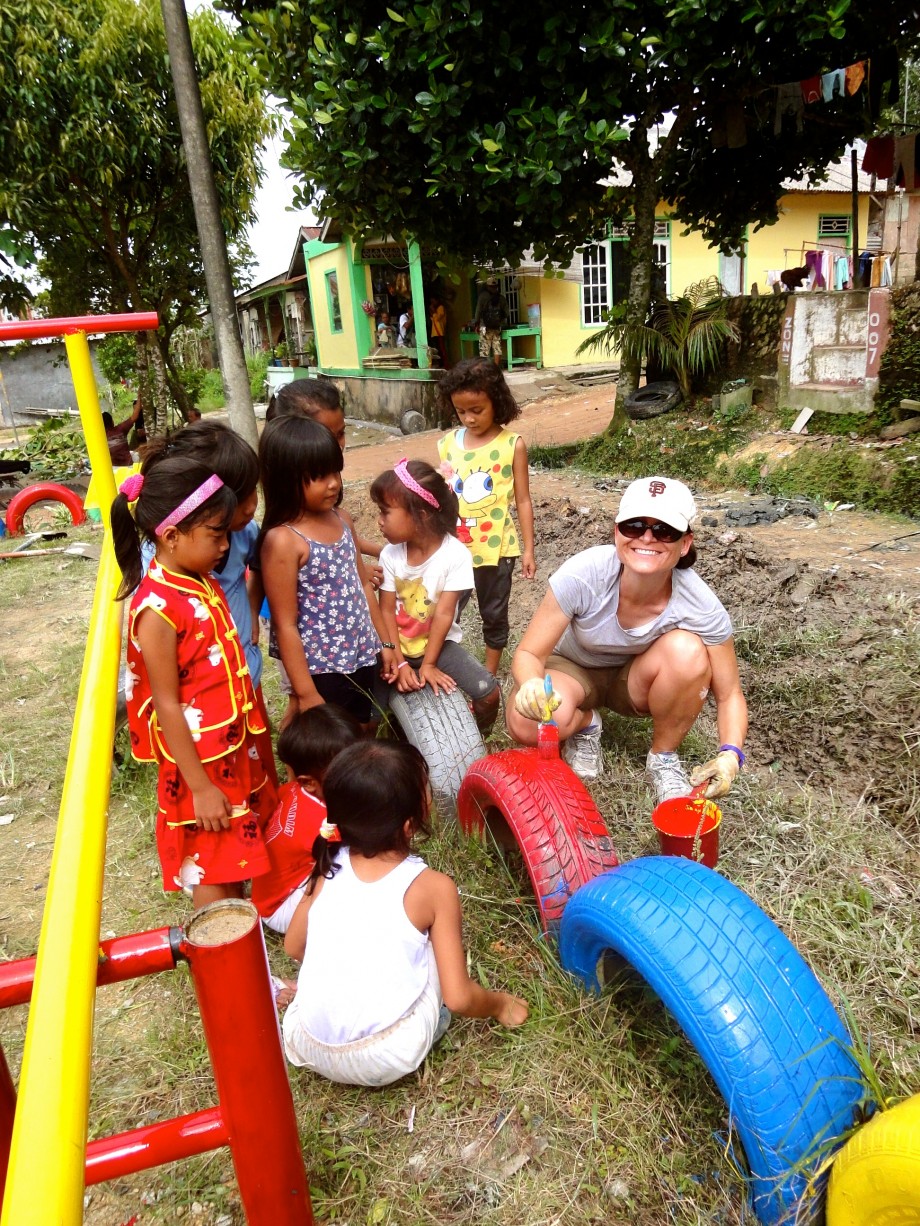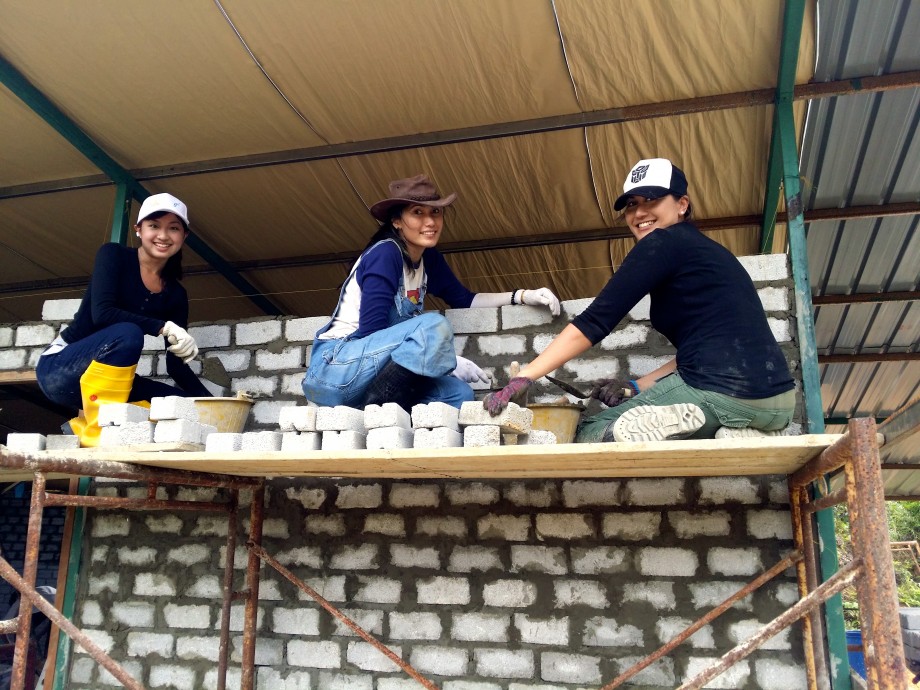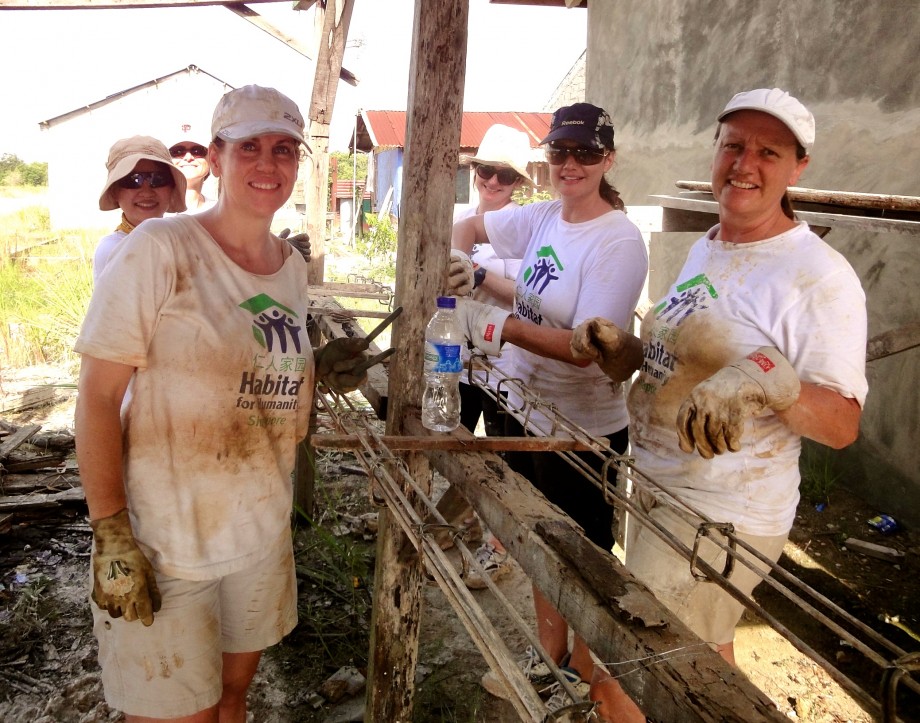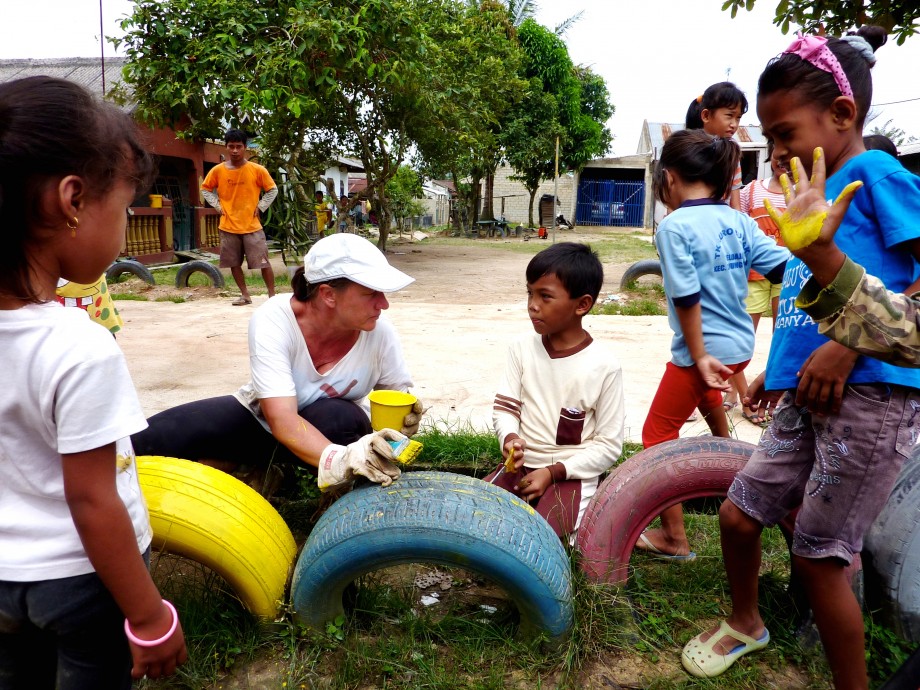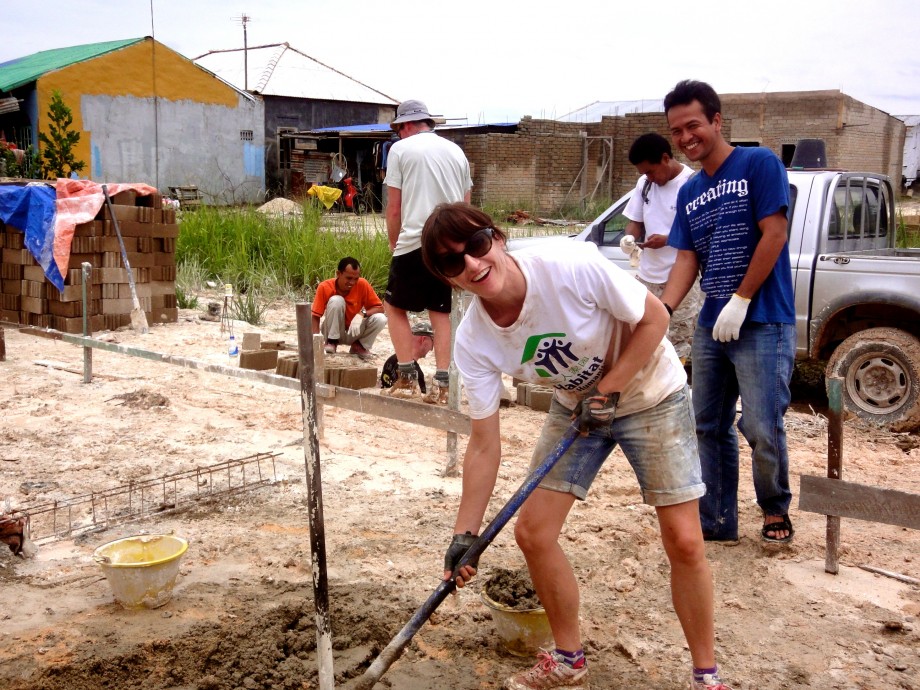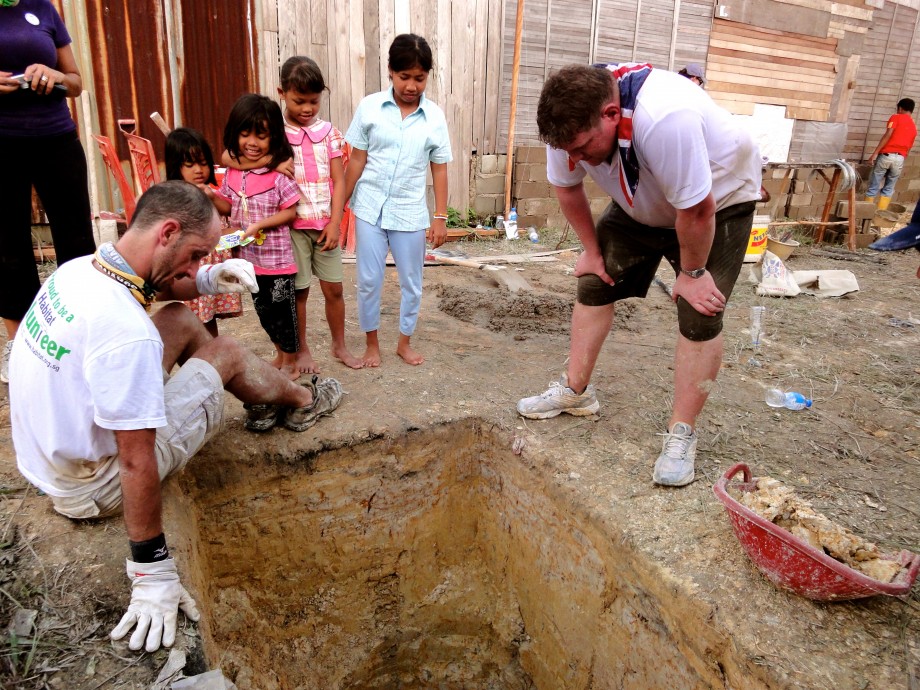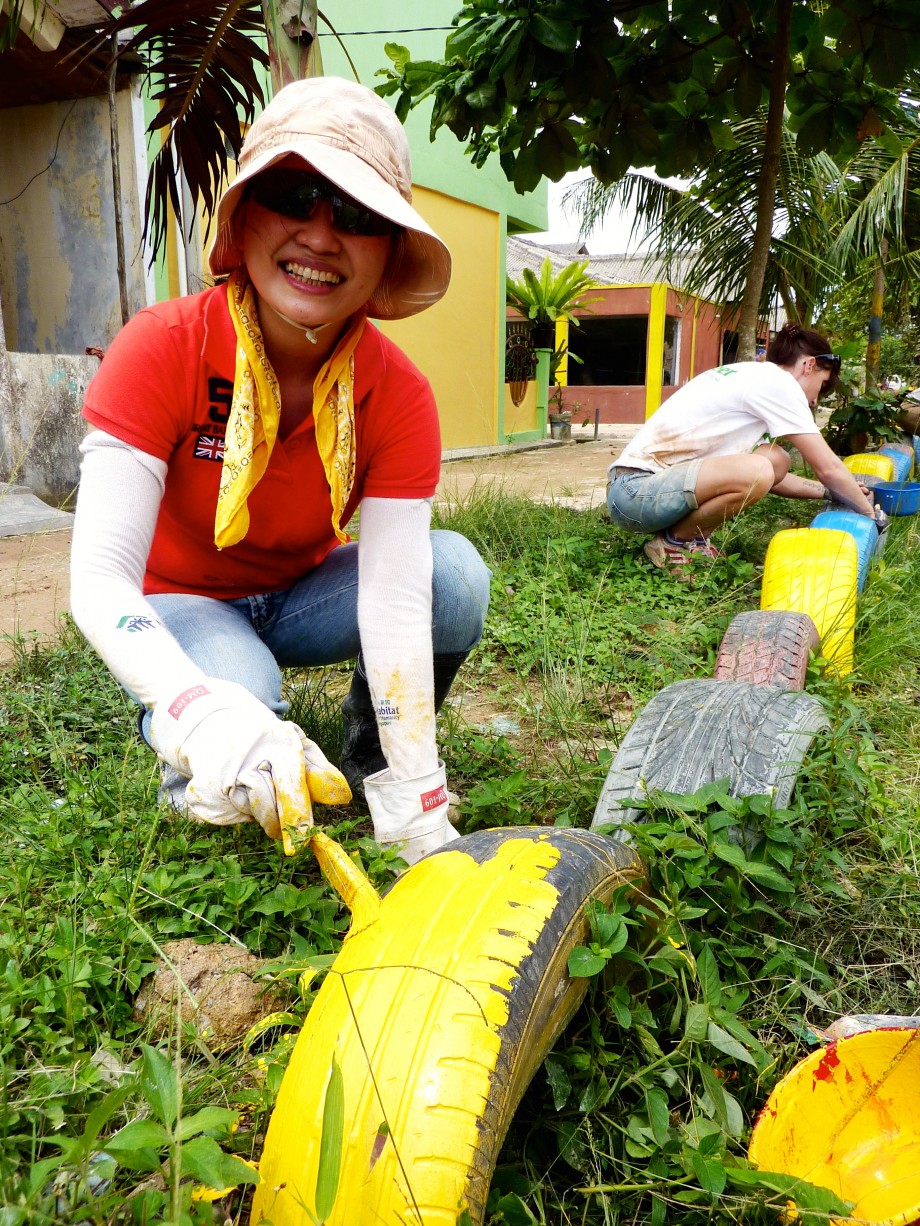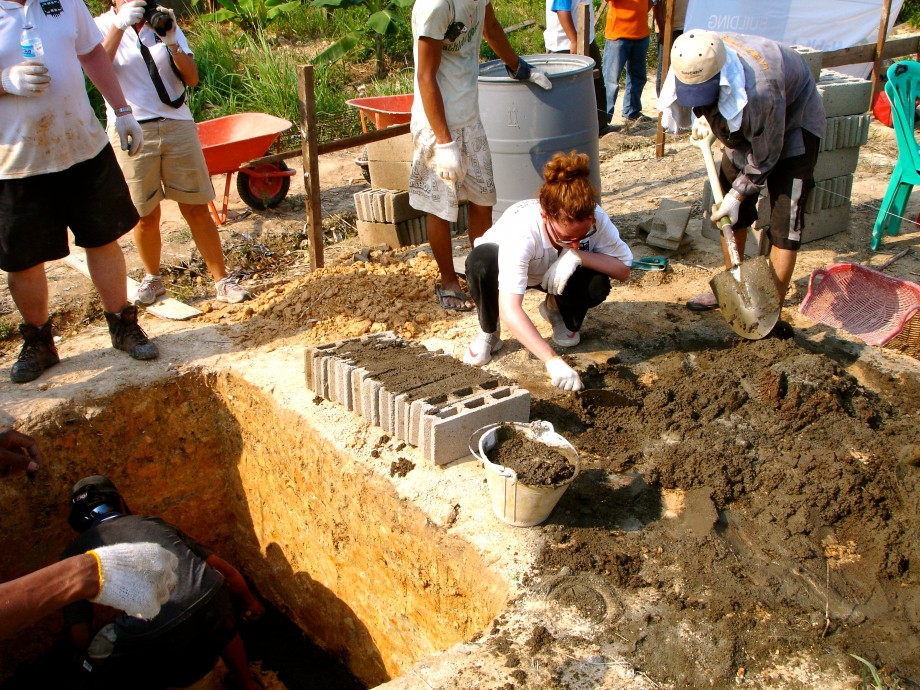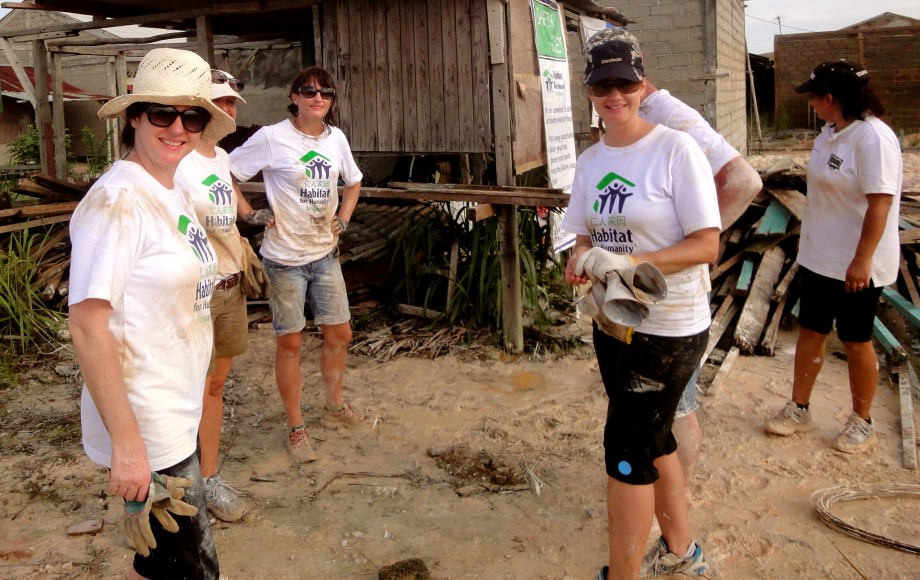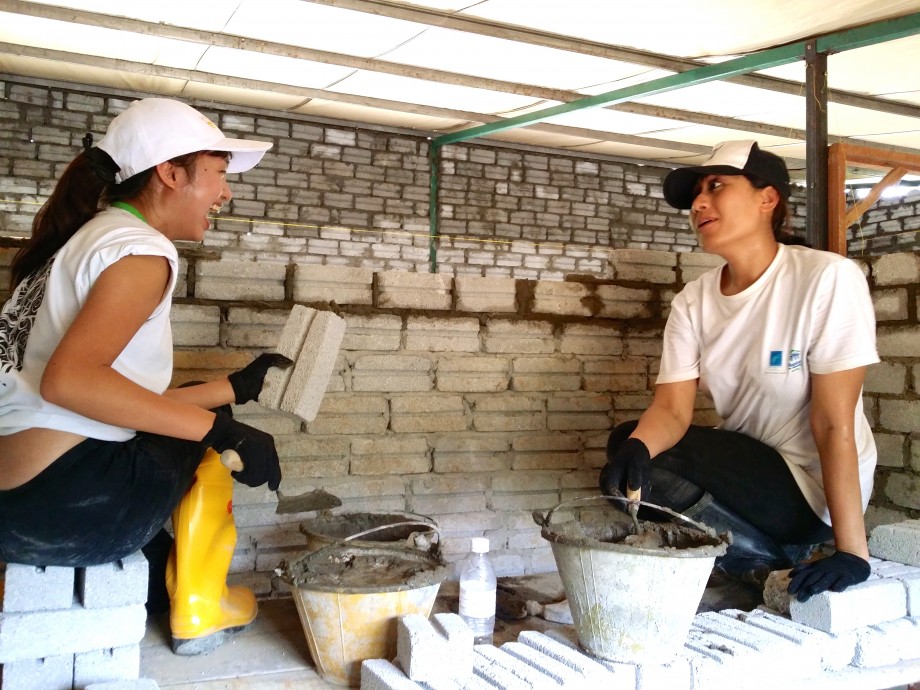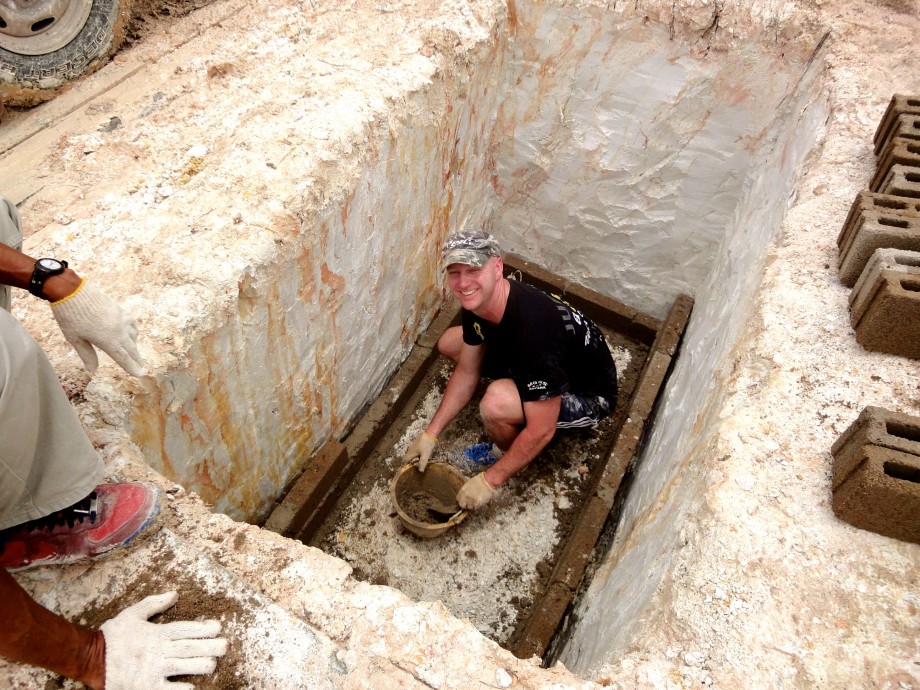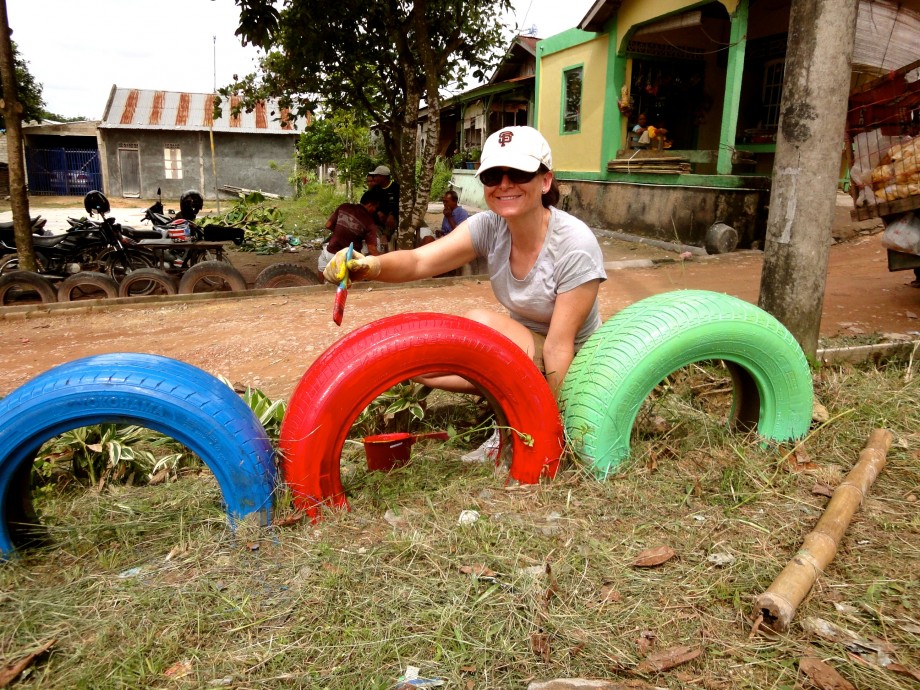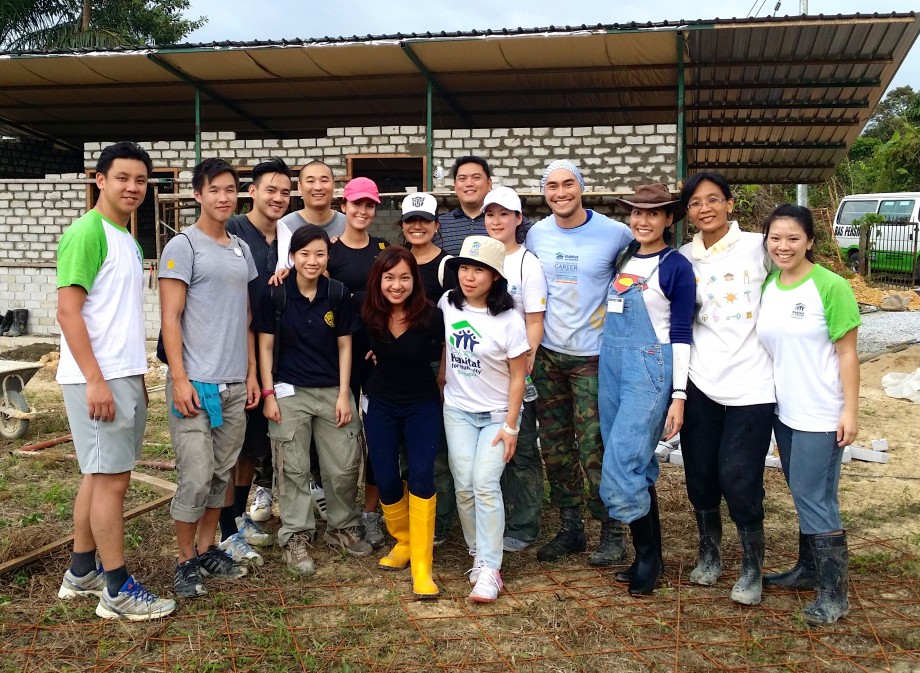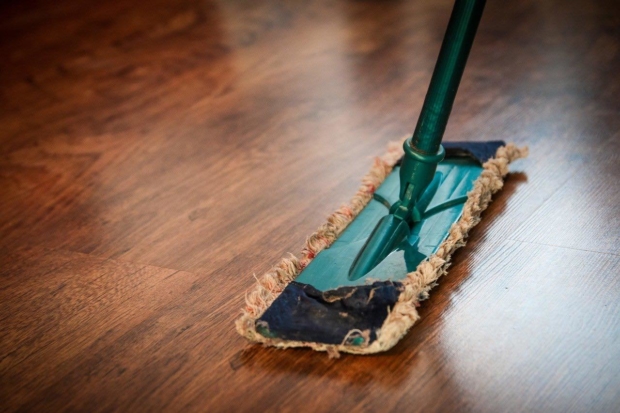Brad Pitt’s done it. Ricky Martin’s done it. So has Daniel Wu, Eunice Olsen and the Wong Fu Production boys. Even ex-US president Jimmy Carter goes on one every year. If you’re looking for an overseas experience with a difference, be like them and join one of Habitat for Humanity’s Global Village build trips to over 70 countries around the world.
Guided by their vision of a world where everyone has a decent place to live in, Habitat for Humanity is committed to eradicating poverty housing and improving the living conditions of the poor. In pursuit of this vision, the international non-profit organisation builds houses for needy communities in partner countries under the Global Village program.
Families in need apply for housing assistance through local Habitat affiliates and following a non-discriminatory policy of selection, potential home-partner families undergo means-testing to ascertain their level of need as well as willingness and ability to repay their mortgages. While offering houses at cost price and loans at interest-free rates, Habitat believes in a hand-up and not hand-out approach. Hence, home-partners need to contribute a portion of the money as well as labour that goes towards the building of their houses. The contribution of labour is known as sweat equity and is a unique feature of Habitat builds as volunteers work alongside home-partners themselves to build the houses.
An entire house will typically take a few months to complete, with volunteer teams rotating during this time. Thus, depending on what stage of construction the house is at, volunteers will get to experience different stages of the building process. Some lay foundations, some lay bricks; others plaster and paint while there are those who get to raise the roof.
No matter which stage the volunteers come in, the experience is equally rewarding. Many volunteers relate stories of how generous and warm the host families are, despite having little for themselves. Others speak of a connection that transcends language and cultural barriers. Without fail, relationships are deepened, personal goals are achieved and families are touched. Ultimately, by living and working with the host community, volunteers have a first-hand opportunity to witness and contribute to Habitat’s effort to eliminate substandard housing throughout the world.
From The Horse’s Mouth
To find out what it is like to be a participant on Voluntourism with Habitat For Humanity Singapore Global Village Built Trips, we interviewed Kristen English, co-founder of Speakeasy crew – a team of expat mothers who frequently participates in the building of houses in Batam as well as Melodie Lee, Resource Development Manager of Habitat for Humanity Singapore on their personal experience.
1. What sets you on the path to try out voluntourism?
Kristen – I have known about Habitat for Humanity since I was at University and always wanted to get involved, but it seemed like life was too busy. In 2009, with the financial crisis, my business slowed down and I had extra time, so I decided to use that time to volunteer with Habitat for Humanity. I also wanted to get my friends involved, but it was difficult for them to all be free for a one-week country build. The 2 to 3 day Batam build was perfect for us. Also, many of my friends have ties to Indonesia (I used to live in Jakarta), so we liked helping out in one of our favorite countries.
Melodie – No, I wasn’t an active volunteer with Habitat prior to joining, and I had the opportunity to do my first house build in Batam two years ago. Since then, I’ve completed a Big Build in Vietnam last year, and another house build in Kuching this February. Personally, I view voluntourism as a privilege to be able to impact the lives of the less fortunate, and I am constantly surprised at how much the people and the experience impact me in return.
2. Compared to the usual tourism, what are the extra perks that travellers get from the experience?
Kristen – So much more! You meet and interact with local people in a much more authentic way. You see their real way of life and learn about their hopes and dreams for themselves and their families. And you know that you’ve made a real difference in their lives – a difference so tangible that it’s an actual house for an actual family who would have no hope of having their own home without your help. It’s very fulfilling. It’s also just as relaxing as any other holiday because you really escape from your day to day routine and experience a different way of life.
Our team, the Speakeasy Crew, was so inspired by the kids in Batam that we worked with Habitat to expand their programs there to building playgrounds and planting trees. I think most of us would agree that seeing those kids play on their colorful playground, when all they had to play in before was the dirt, is definitely on the list of the best things we’ve has done in our lives. How often can you say that about your holiday? Not very often.
Melanie – It is often the feeling of investing in someone’s life, building a tangible structure that provides safety and security for the family that will last long after volunteers have left. In the process of building the house, you meet fellow volunteers and you trade stories and share memories, all while working toward a common goal. Meeting the family you are building the house for is also particularly rewarding – nothing much compares with the grateful smiles and joy that flow freely, surpassing all manner of language barriers.
3. What is the usual duration of such trips?
Kristen – Our team always does the 2 to 3 day trips, but Habitat also offers one week build trips to great locations, like Nepal, Fiji, even Bali, and more. Check their website for where they’re going during the next year.
Melodie – Each trip should be around 3 to 7 days.
4. Who are suitable candidates for voluntourism? Who should avoid such programs?
Kristen – If you’re curious about the world and want to make it a better place, then this is for you. Build trips can be tough if you have serious back problems, but there are other types of voluntourism for people who don’t want to dig and get dirty.
Melodie – Most people are suitable candidates, if you are aged 14 and above and physically fit. If in doubt, one should check with a doctor who can deem if you are medically unfit for builds.
5. How will Bare Your Sole and Project HomeWorks prepare participants for the real thing?
Kristen – Project HomeWorks is amazing. Poverty exists in pristine Singapore, and the elderly poor need our help and our companionship. It’s a great way to experience the intrinsic benefits of a build trip without having to travel. After that, you will probably be inspired to make time for a trip.
Bare Your Sole is a great way to support the overall mission of Habitat, and if you have small children, it’s a great way for them to get involved and learn that most kids in this world don’t have iPads and video games – many don’t even have shoes. They can learn to appreciate what they have and that they should help the less fortunate, and that’s a great parenting lesson.
Melodie – Bare Your Sole is our annual fundraising walk where participants take off their shoes to remember those we serve in the Asia Pacific region, many of whom often go without adequate footwear because they cannot afford it. Simply put, going barefoot for a few hours will give one a tangible taste of what it’s like for many of our beneficiaries, and is truly a way for one to walk in the shoes (or lack thereof) of those with no homes.
Project HomeWorks is a weekly home clean-up session we do for the elderly poor and handicapped who typically live in one-room rental flats in Singapore. Many are too weak to take care of their living environments, and so together with the help of volunteers, we improve the safety and sanitation of their units. In terms of actual preparation for the real thing – as in the builds – then on the surface, Project HomeWorks doesn’t seem to have much of a link. Of course, volunteers both on builds and at Project HomeWorks should be prepared that they are about to step into stark poverty conditions that can be rather confronting. The work is difficult, and can require some muscle and a good deal of grit.
However it is important to see Project HomeWorks as the real thing too – we serve about 300 elderly per year; fumigating pesky bed bugs, replacing worn and soiled mattresses with new ones, and giving peeling walls a fresh coat of paint. Making a difference in others’ lives can also start at home here in Singapore.
6. Have there ever been team members who signed up but were unable to adapt on-ground? What happens then?
Kristen – No, that’s never happened in our team, and we’ve had about 40 to 50 different people join our builds over the last 5 years.
Melodie – No. Habitat volunteers are briefed thoroughly; from the build tasks, to the profile of the home partners (beneficiaries), they are told to prepare for challenging conditions. That said, more often than not, we hear of volunteers telling us the tasks and conditions were far less arduous than expected.
7. How are living conditions for the team like and are there medical aids in place?
Kristen – We stay in a clean, comfortable hotel with hot showers and good food. After spending the day on the build site, seeing how the people we are helping have had to live, it feels pretty luxurious (even though it’s just an average hotel). We’ve never had any medical problems, but the Habitat staff is always right there to take care of any problem that might come up.
Melodie – Volunteers typically stay in 3-star hotels, and it will be decent accommodation. Regarding medical aids, there are First Aid Kits on site.
8. What should participants take note of during the trip?
Kristen – Come with an open mind and heart and a willingness to work to help others. Don’t worry about getting dirty for a few days. A little dirt never hurt anyone. And be prepared for your heart to melt when the home partners express their gratitude for your help.
Melodie – To have an open mind, to adapt to the culture (especially when it comes to perception of time, as Singaporeans are very efficient and we expect resources to be available immediately) and have fun!
Types Of Build Programs
Global Village builds typically feature a 10 to 12-person team, and can go up to 20 people or more depending on the project country. The itinerary can be customised and teams can opt for a build that is between 3-7 days long. Global Village build schedules worldwide are open to teams from all countries so project sites are allocated on first-come-first-served basis. Most teams sent by Habitat for Humanity Singapore build in Asia Pacific countries. The availability of build dates are subject to a country’s build schedule and weather conditions. If volunteers have a specific country and date in mind, we first check with our Habitat counterparts in that country to determine availability. Popular destinations include Nepal, India, Thailand, Cambodia and Vietnam.
Closer to home are Kuching Builds and Batam Builds. Both just an hour away from Singapore, Kuching and Batam Builds are largely similar save for location and transfer options. Organised between Thursday and Saturday, teams may opt for a 1 day, 2D/1N or 3D/2N trip. Each team consists of a minimum of 8 to 10 people and there is a maximum limit of 20 persons or 2 teams per build date.
Special builds also take place throughout the year. One such build is known as Big Builds, where hundreds of volunteers from all over the world come together for a week to build as many as 100 houses with the local community at one go. Two Big Builds are scheduled for 2014 – the Borneo Blitz Build in September and the Everest Build in November. Another special build is called the Jimmy Carter Work Project. Helmed by former President Carter and his wife, Rosalynn, the project helps raise awareness of the critical need for decent shelter and likewise attracts volunteers from around the world. Interested volunteers can sign up as individuals for Big Builds and the Jimmy Carter Work Project.
Habitat also works on disaster relief projects. The Singapore national office has sent teams to places such as Banda Aceh, Sichuan and Cambodia to help communities rebuild homes and hope.
Be A Volunteer
Volunteers are required to form the teams themselves, other than for Big Builds. In addition to in-country costs (accommodation, meals, water, Habitat compulsory accident & illness insurance, return tickets, local ground transport, R&R, etc.), each team will need to fundraise a minimum donation that goes towards the respective country’s building project. Airfare and visa (if applicable) are arranged by the team themselves. Building experience is not necessary but volunteers should come with an open mind, a can-do spirit, a willing heart and be physically fit. There will be Habitat staff and masons at the worksite to guide volunteers and construction tools will be provided. Most countries require volunteers to be at least 14 years of age, while some countries may require a minimum age of 16 or 21 years old.
Teams are advised to spend at least 4 to 6 months for trip preparation, depending on location and build type.
Please email gv@habitat.org.sg for more information.
AspirantSG Cares
AspirantSG Cares is our blog social responsibility (BSR) initiative to take on a proactive role to assist individuals or groups who are driving social projects for the underprivileged in Singapore.
If you have a meaningful social project on hand which you will like our participation, please click here

